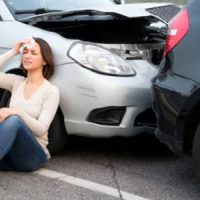Is The Trailing Driver Always Responsible For A Rear-End Accident?

One of the most common types of car accidents in Florida is the rear-end collision. This occurs when one vehicle crashes into the vehicle directly in front of it. The passengers in the front vehicle often sustain significant injuries in rear-end collisions, notably whiplash.
You might have read that the rear or “trailing” driver is always legally responsible for causing a rear-end accident. But is that actually true? As with many legal questions, the answer is not a simple “yes” or “no.”
What the Florida Supreme Court Has Said About the “Presumption” of Fault in Rear-End Accidents
The Florida Supreme Court actually weighed in on this question in a 2012 decision, Birge v. Charron. In that case, the plaintiff was actually a passenger on a motorcycle. The driver of the motorcycle swerved to avoid a rear-end collision with a car operated by the defendant. The motorcycle subsequently flipped over, injuring the plaintiff. In court, the defendant argued he could not be liable for the accident, as Florida law assumes the rear driver–in this the motorcycle–caused the accident.
As the Supreme Court explained, Florida courts have traditionally assumed–dating back as far as 1959–that when a “defendant runs into the rear of a plaintiff’s car while plaintiff is stopped at a traffic light or intersection, there is a presumption of negligence on the defendant.” But in 1973, the Supreme Court adopted what is now known as the “comparative negligence” rule in personal injury cases. Under comparative negligence, a defendant in a personal injury case can allege the plaintiff’s actions contributed to their injuries. If comparative negligence is proven, the court must reduce any award of damages in proportion to said negligence.
For example, if a jury hearing a car accident case decides the plaintiff was 20 percent at-fault, then the defendant only has to pay 80 percent of the total damages.
The Birge court explained that due to the existence of the comparative negligence rule, the rear driver could introduce evidence rebutting the presumption and demonstrating the front driver’s actions contributed to the accident. If such evidence is produced, the judge should send the issue to the jury and not simply presume the rear driver was at fault. And the jury does not have to operate under the presumption of rear-driver fault. Instead, the jury can make a “permissible inference” that the rear driver caused the accident, but it is no longer a presumption.
Finally, in a case like Birge, where the plaintiff was a passenger rather than a driver, the presumption of rear-driver fault still applies unless the defendant introduces evidence to rebut the presumption at trial.
Speak with a Florida Personal Injury Attorney Today
In any auto accident, you should never assume that a judge or jury will hold the other driver responsible. You need to work with an experienced car accident lawyer who can help you build and present a strong case in court. Contact Leifer & Ramirez today to schedule a free initial consultation to review your case.
Source:
scholar.google.com/scholar_case?case=4444179763198569373


